What is the name of the force that attracts all objects with mass to each other?
Gravity
What two characteristics are compared on an H-R diagram?
Luminosity and Temperature
What is the starting stage of all stars?
A nebula
What type of star has less than twice the mass of the Sun?
A low mass star
Category of stable stars in the middle developmental phases that plot along a continuous diagonal belt on the Hertzsprung-Russell diagram
Main sequence stars
What two factors affect the strength of the gravitational force between two objects?
Mass and Distance
On an H-R diagram, where are the hottest stars located?
It is located on the left side of the diagram
What powerful event happens when a high-mass star runs out of fuel and its core collapses?
A supernova
What is the final stage in the life of a low-mass star?
A white dwarf
The intensity, or brightness, of light from a celestial body, which can be used to identify the body’s characteristics
Luminosity
If the distance between two stars doubles, what happens to the gravitational force between them?
The gravitational force between them decreases
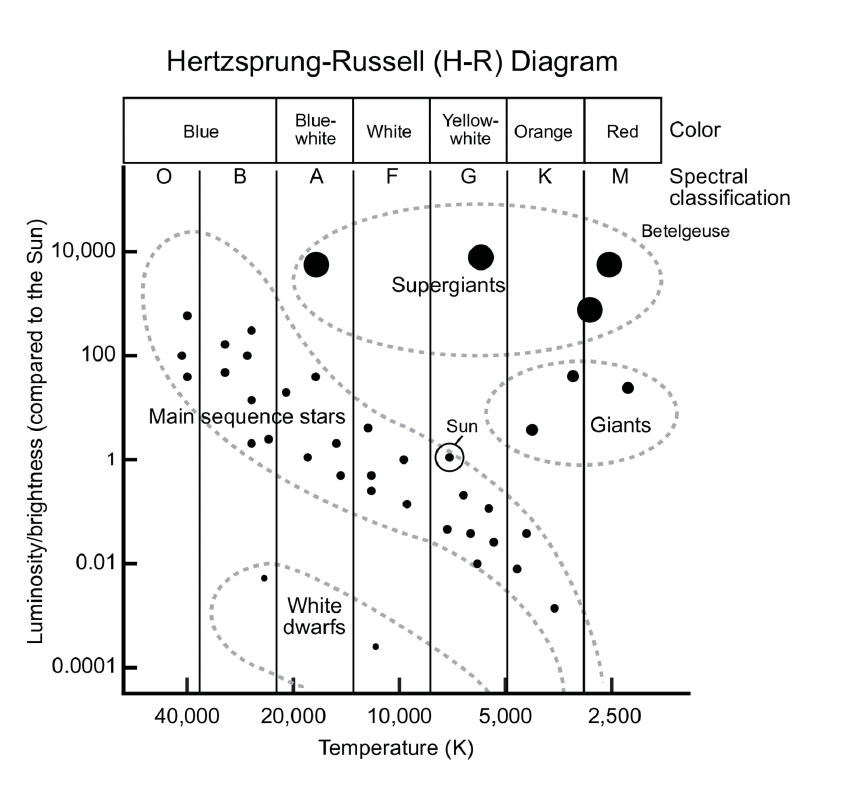 If a star is cool and bright, where would it be located on an H-R diagram?
If a star is cool and bright, where would it be located on an H-R diagram?
It would be located in the upper right corner of the diagram
What causes a high-mass star to expand into a supergiant near the end of its life?
When the star exhausts its hydrogen in the core, which causes the core to collapse and the outer layers to expand
Why do low-mass stars live longer than high-mass stars?
They live longer than high mass stars because they burn hydrogen more slowly during fusion
A celestial body consisting of a mass of gas held together by its own gravity in which the energy is generated by nuclear reactions in its interior
A star
Star A and Star B are the same distance from Planet X, but Star A is twice as massive as Star B. Which star has a stronger gravitational pull on Planet X and why?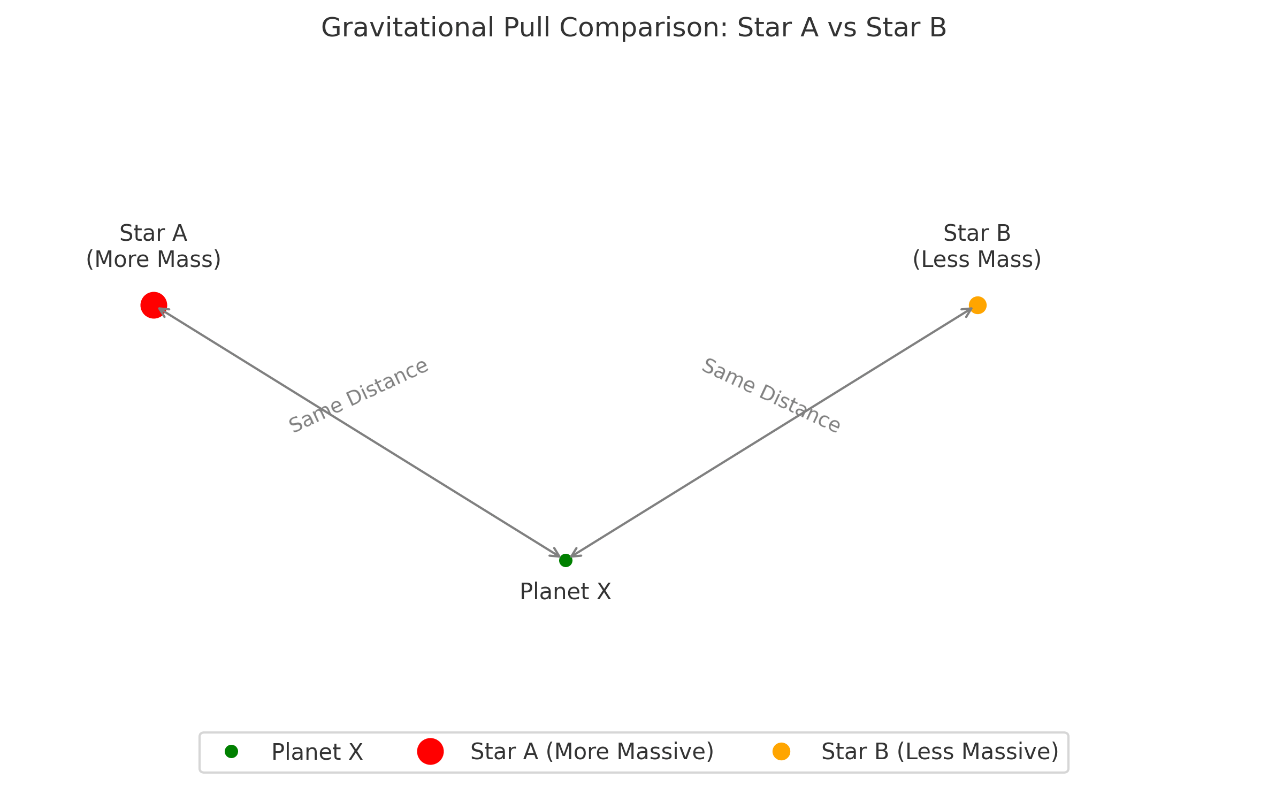
Star A, because the gravitational force increases as the mass increases
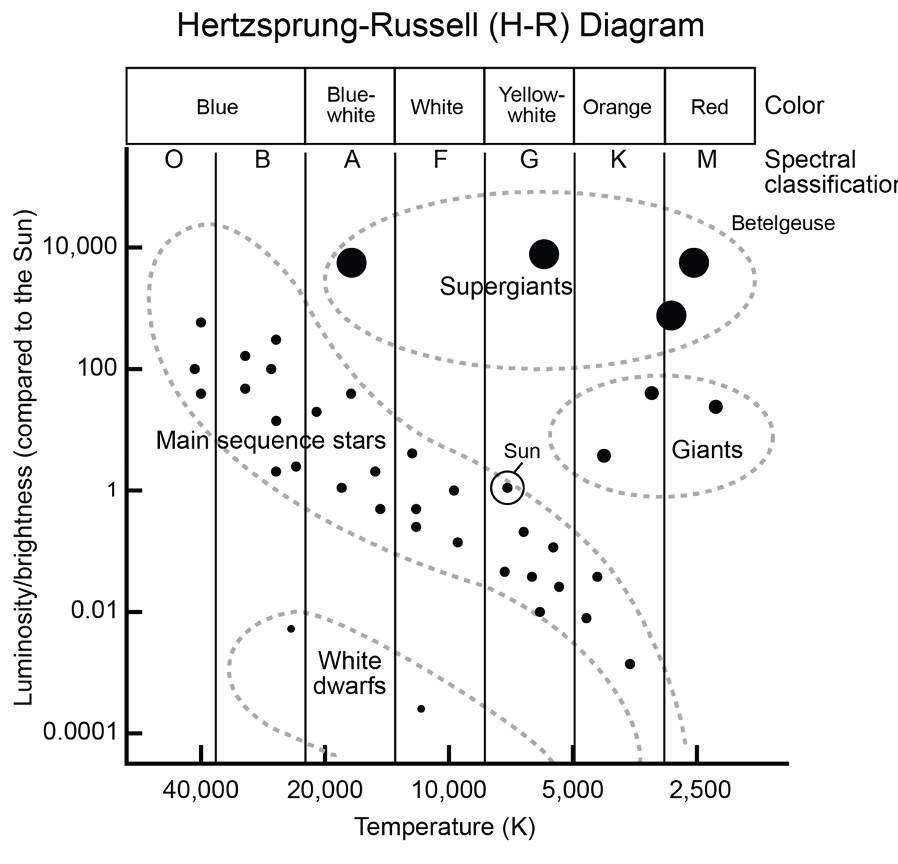 Two stars are the same cool temperature and appear on the right side of the H-R diagram. One is very bright and located near the top of the diagram, while the other is slightly less bright and located a bit lower. Based on this information, what type of stars are they? (Your answer should indicate which star is very bright and which star is slightly bright)
Two stars are the same cool temperature and appear on the right side of the H-R diagram. One is very bright and located near the top of the diagram, while the other is slightly less bright and located a bit lower. Based on this information, what type of stars are they? (Your answer should indicate which star is very bright and which star is slightly bright)
The brighter star would be a supergiant, and the slightly less bright star would be a giant.
Betelgeuse is a massive, cool, red star that has expanded greatly after exhausting its fuel. What type of star is Betelgeuse, and what does its stage indicate about the next stage in its life cycle?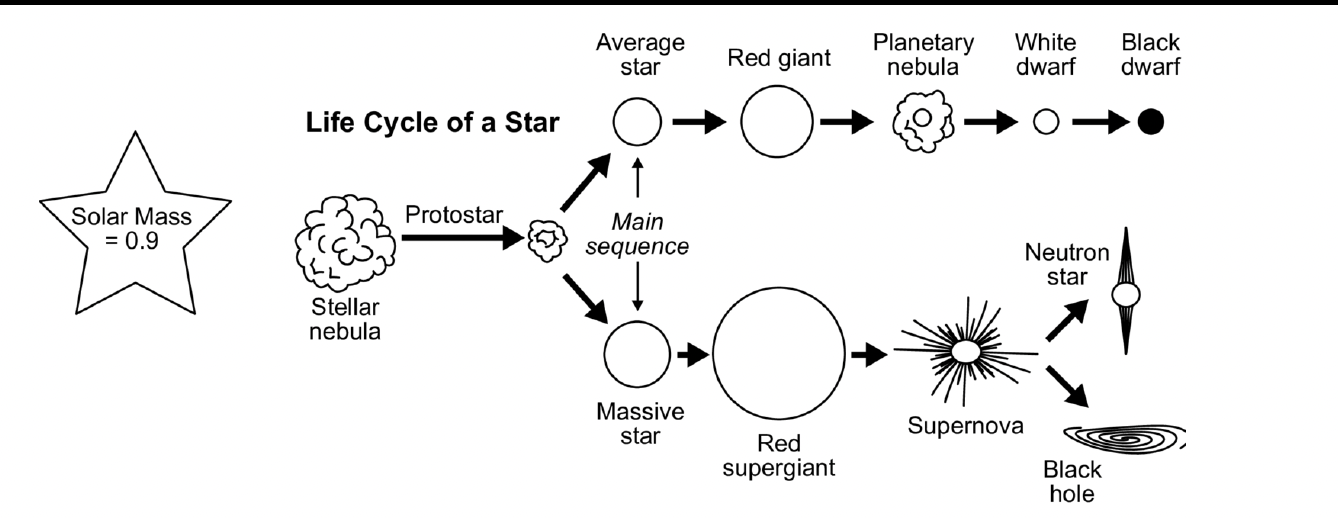
Betegeuse is a supergiant; it’s a late stage high-mass star preparing for a supernova
Describe three changes a low-mass star goes through as it leaves the main sequence stage and becomes a red giant.
1. The core contracts as hydrogen runs out
2. The outer layers expand
3. the star becomes cooler
Average kinetic energy of all the particles in a material; measured by a thermometer in degrees (usually degrees Celsius or degrees Fahrenheit)
Temperature
Paul is learning that all objects with mass exert gravitational forces on each other. He creates a table showing the mass and distance of several space objects from Earth.
Using the information in the table and your understanding of Newton’s Law of Universal Gravitation, explain why Earth orbits the Sun rather than any of the other objects listed.
Earth orbits the Sun because the Sun has the greatest mass out of all the objects listed. Even though it is farther away than some of the others, its massive size creates a stronger gravitational pull on Earth. According to Newton’s Law of Universal Gravitation, gravitational force increases with mass and decreases with distance, so the Sun’s huge mass makes it the dominant force keeping Earth in orbit.
A star appears in the lower left corner of an H-R diagram. Based on its location, describe its temperature, luminosity, and type.
It is very hot, dim, and is likely a white dwarf
A student claims that all stars end as white dwarfs. Using what you know about stellar mass and fusion, explain why this is incorrect.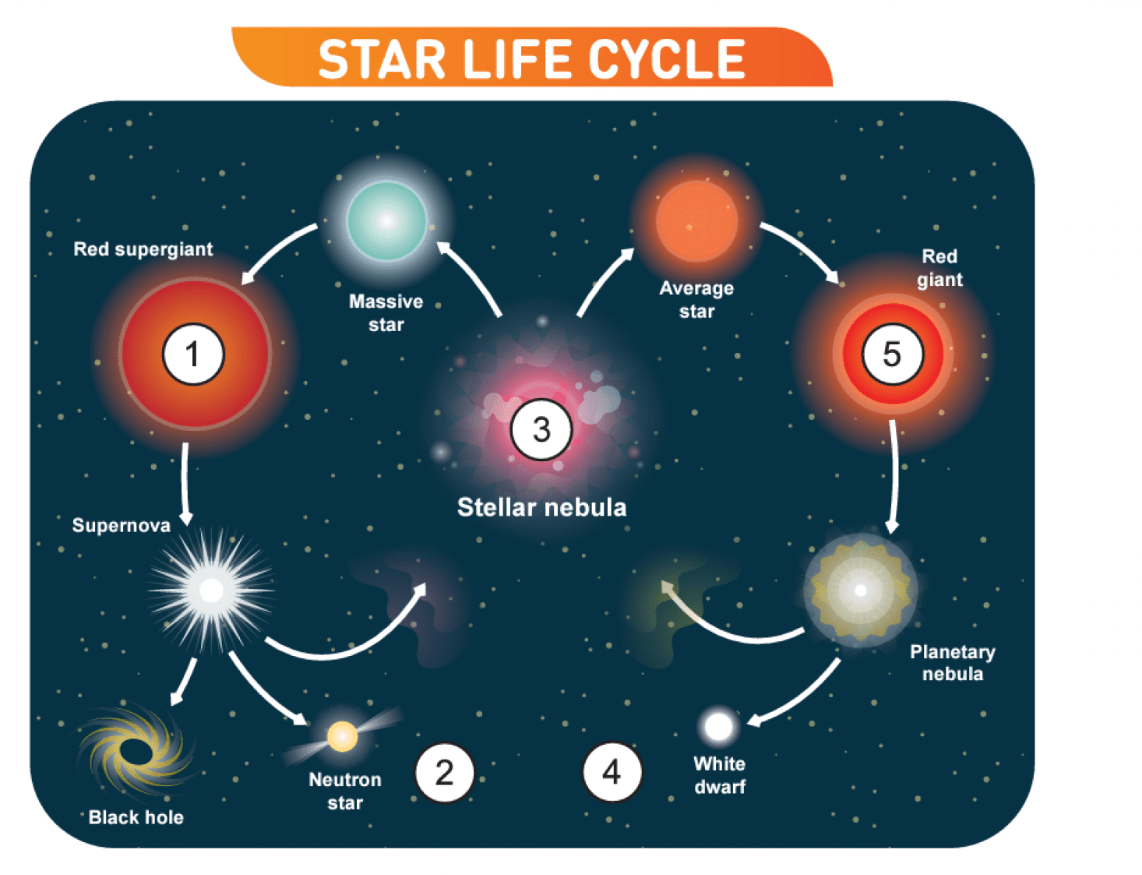
That is incorrect because only low- and medium-mass stars become white dwarfs. High-mass stars go through supernova explosions and can become either neutron stars or black holes, depending on their remaining mass
A student notices that white dwarfs are hot but dim. What does this suggest about their size and energy output?
It suggests that they are small in size and no longer produce energy through fusion.
A graph that shows the relationship between a star’s surface temperature (color) and its luminosity (brightness).
Hertzsprung-Russell diagram